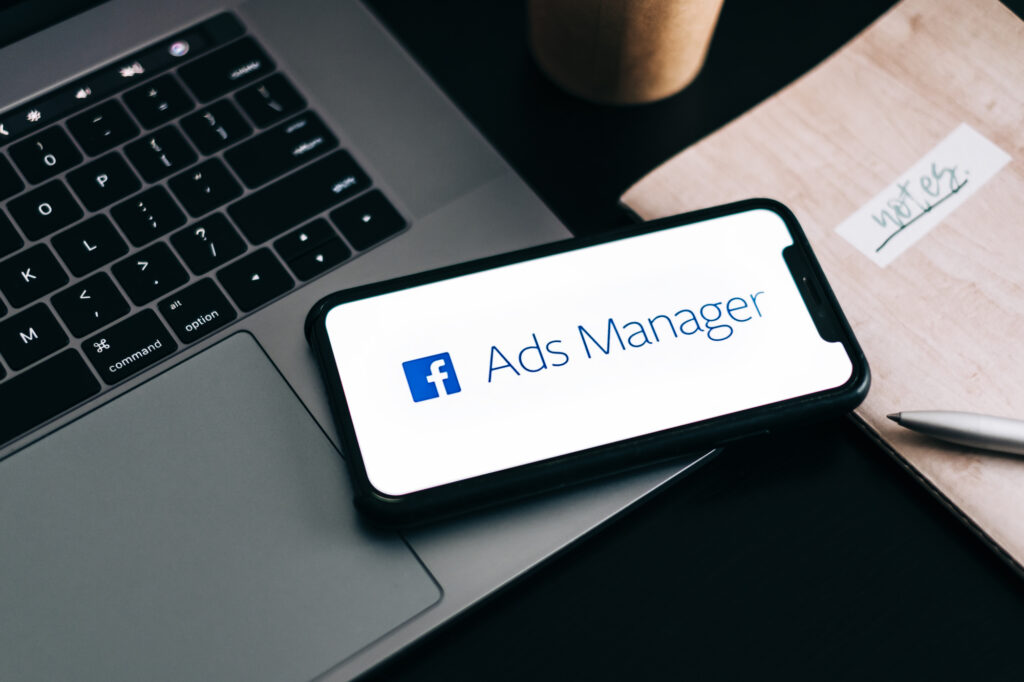You are missing a great opportunity if you don’t have Facebook Retargeting Campaigns.
Think of people who visit your website but don’t buy anything.
Don’t let your customers go
Are you interested in setting up Facebook Remarketing Campaigns for a better Return on Investment (ROI) for your PPC advertising strategy?
This guide will cover everything you need about Facebook’s Retargeting.
Disclaimer. Facebook Retargeting works best for active Facebook users.

Quick Navigation
Both beginners and professionals can use this guide to learn about PPC.
You can find our TOP 8 Best Practices in Facebook Retargeting here.
- What’s Facebook retargeting?
- What does Facebook retargeting do?
- Why use Facebook retargeting
- Top practices for Facebook Retargeting campaigns
- How do you set up Facebook retargeting?
- Remarketing audience suggestions for
Ready to learn more about Facebook Remarketing? Let’s get started!
What’s Facebook Retargeting?
Let’s start with the basics. What is Facebook Retargeting?
Facebook Retargeting can be used in PPC to target people that know your brand.
Retargeting allows you to show your ads to people who already know you. This is a way to get people to take action.
Let us look at the classic marketing funnel to understand remarketing.
Marketing Funnel
Traditional marketing funnel
A Facebook advertising strategy is more than promoting the same ads to everyone. Instead, you should create a simplified campaign flow for each stage of your funnel.
Awareness: The stage is for people who aren’t familiar with your product.
Consideration: Includes people who are already interested in your brand or product. With consideration-stage audiences, retargeting is great!
These people can be called warm leads or online buyers.
Customer retention Customers can be current or past customers. Facebook ads can be used to promote new products or services.
Each stage of the marketing funnel should be used to its full potential
Each stage can be set up using Facebook ads. Each stage may require a different approach.
An example is a company that you see in your feed, but have never heard of. It is unlikely that you will follow their advertisement and open your wallet.
Facebook Retargeting can be found at the end of your funnel. We’ll discuss strategies later to help them move through your marketing funnel.

What does Facebook retargeting look like?
Facebook Retargeting allows you to reach past website visitors (or any other custom audience) with ads.
Remarketing is explained in three simple steps:
- Get in touch with your brand.
- Facebook algorithms are used to identify a person’s profile on Facebook.
- These people will see your Facebook ads if they are part of your Retargeting Audience.
Facebook retargeting: Why use it?
You can use retargeting ads on Facebook to reach your entire audience.
Remarketing can bring back as much as two dollars per dollar.
These remarketing stats are even more impressive:
- Retargeting decreases cart abandonment by 6.5%
- 68% Most agencies that market has a budget to remarket.
- Retargeting is efficient at 1,046%
- 37% of customers click on retargeted ads because they like the product.
- 67% of retargeted use Facebook Exchange for online advertising.
Nearly three-quarters of all U.S. online shoppers view advertisements for products that they have previously searched for on other websites
Don’t miss this opportunity!
But should Facebook be your primary channel to remarket?
Advertisers prefer Facebook because of its large reach. Facebook has 2.27 trillion active monthly customers. Facebook is preferred by advertisers to remarket because of its vast reach.
More than half of all users log in daily.
Yes!
You can have a picture that is just as stunning on Instagram. Instagram ads and Facebook ads can be combined for younger audiences.
TOP 8 best practices for Facebook retargeting campaigns
It can be easy to set up remarketing ads. Professional marketers and agencies use a few best practices.
You’ll get them all!
- Maintain at least one active program for remarketing.
- Test several high-value retargeting audiences
- Make certain that your message is consistent with
- Create dynamic remarketing advertisements
- Remarketing Offers should be included
- Segment your audience well
- Users who converted should be exempt
- Pay attention to the frequency of ads
These top-quality tips will help to create your first Facebook Retargeting Campaign.
1. At least one active remarketing campaign is required
Facebook retargeting is a very popular strategy.
Remarketing cold audiences to increase sales is a smart strategy.
Many people don’t convert immediately after they visit your blog or website. Keep them interested!
Adobe discovered that 40% of sales revenue comes directly from repeat customers and marketing customers.
Remarketing should account for at least 20% of your marketing budget. The budget could be used to boost your Facebook advertising campaigns.
2. Test several high-value retargeting audiences
Although “past 30-day website visitors” is the most popular remarketing audience, there are many Facebook Custom Audiences that can produce great results.
After you have placed the Facebook Pixel code onto your website, you can create the following retargeting audience
- Web users in the past 30-60, 90, and 90 days
- Visitors to Your Pricing Page in the Last 30 Days
- Your blog will continue attracting repeat visitors
- Visitors to particular landing pages or blog articles
- This audience can be used to upsell!
- Online shoppers that have purchased items but have not completed their orders.
- Internet shoppers searching for specific products or product types
It is smart to target multiple remarketing groups simultaneously. You can segment your audience if your website has high traffic volumes.
Campaign results will be significantly improved if you use the Facebook audiences mentioned above.
Your campaign can produce better results
3. Make sure your message and marketing channel match.
After you have chosen the audiences that you wish to retarget you can create ads and select landing pages
You must make sure that your ads are relevant to the target audience at this stage.
Remarketing advertisements should not be the same as those used in prospecting campaigns.
Tip: Multiple Facebook retargeting ads can be run in one campaign. Each landing page visitor will get a different ad copy.
4. Create dynamic remarketing advertisements
Dynamic remarketing ads are Facebook ads that display specific products your customers have previously seen in your online shop.
Remarketing ads that use dynamic remarketing can be compelling because they highlight the users of the product are most interested in.
To create dynamic remarketing ads you will need:
1. The Facebook pixel (or SDK)
Dynamic ads are most effective when there is continuous communication between your product catalog online and your Facebook ads.
2. A Business Manager account
To manage dynamic ads, you will need a Business Manager account. These ads need special assets and product catalogs.
3. A product catalog
Upload a product catalog to your Business Manager These services can automatically create dynamic ads to promote your business.
This official guide from Facebook gives more information about dynamic ads.
You’ve already created product catalogs for dynamic marketing. Now you can test your ads with catalog ads.
5 Remarketing Offers should be included
Visitors may not have converted after the first or second visit.
Sometimes the product is too costly.
Some people may consider your product too expensive.
You might promote remarketing ads with a discount offer if you think they are effective.
Tip – Don’t advertise a discount to everyone via Facebook. Remarketing is a great way to reach your audience.
6. Segment your audience well
It’s smart to have multiple remarketing audiences
Healthy segmentation is impossible. Your Facebook audience should contain at least 1000 people.
What happens when there are too many advertising audiences?
- Facebook algorithms will not quickly figure out who is interested in your ads if there aren’t many conversions or large audiences.
- It’s too expensive and time-consuming to create ads visuals that target different remarketing audiences
7. Users who have already converted shouldn’t be
Facebook advertising professionals make the error of not including users who have already converted.
Converted users should not be included in your retargeting campaigns.
They will continue to see your ads till they get bored.
Converting users is simple to remove.
- To track past converts, create a Facebook Custom Audience.
- This audience should be excluded from your remarketing campaigns.
This audience cannot be retargeted. We recommend the Custom Audience of the past 60 or 90 Days’ Purchasers.
8 Pay attention to the frequency of ads
Many people love chocolate. You can get sick if you eat too much.
The same rules apply to Facebook Remarketing Ads. It can lead to negative consequences if it is not seen enough.
You can see the frequency metric for your ads in Facebook’s Ads Manager report.
See how often your Facebook ads campaigns have been used
- Visit Facebook Ads Manager.
- Reporting periods should be within the last 30 days or 14 days.
- To see the frequency per ad campaign, click on the “Delivery Report”.
Which Facebook retargeting frequency is the best?
AdEspresso’s analysis reveals that campaigns with a higher frequency than 4.0 have negative effects on campaign results.
Remarketing can increase your ad frequency. We are very pleased with the results of remarketing.
Tip: Create more creative ads to promote various offers to decrease ad fatigue using Facebook ad-remarketing.
Set up Facebook Retargeting.
It is easy to set up Facebook retargeting ads. The same process can be used to create campaigns.

- Before you can start retargeting your Facebook audience, you must first set up your audience. You will need to create custom audiences
- Create a new Facebook advertising campaign.
- Make an advertising campaign to reach your target audience using remarketing.
- Add your creative ideas and photos to the Ad Set
- Set your remarketing campaign live.
It sounds so simple, doesn’t it?
Targeting your audience is as simple as ABC.
Before you can create a Facebook Retargeting Program, there is one thing you need to know. The Facebook tracking Pixel.
Set up a Facebook Pixel.
First, set up your Facebook Pixel to start Facebook Ads. This will enable you to track the visits to your website, online products, and mobile apps.
Now let’s see how to set up Facebook Pixel.
Open your Ads Manager or Facebook Business Manager.
Next, click the navigation menu in the upper left corner. Click on the “Pixels” link under “Measures & Reports”.
To manage pixels, go to this page
If you don’t have one, you can make one.
Create a Facebook pixel
You can now give your pixel a name (e.g. Click “Create” to save the “[Your Brand Name] pixels.
Name your Facebook Pixel
Download the pixel
Select one of these options to insert pixel code on your website
- This method is the easiest to include in your website’s code.
- You can add this through your Tag Manager.
- Please provide the details to the developer you prefer.
You can add your Facebook pixel to your website.
You can integrate it with your Tag Management System to view partner sites and request one. Facebook will handle the rest.
It can be manually installed. Verify that it works.
Copy and paste the pixel code into your website code.
The Chrome extension lets you check if a Facebook Pixel has been activated or disabled.
You can use the Google Chrome extension to test your pixel
You should ensure that you have the pixel codes for every page of your website. Copy the code and add it to your template.
Create Facebook pixel events
Once you have created your Facebook Pixel, it is time to examine the conversions it tracks and create new ones. There will be more options than you could handle.
The Facebook Standard Event is this
- Information about Payments
- Add To Cart
- Add To Wishlist
- Complete registration
- Get in touch
- Personalize your product
- Donate
- Locate
- Initiate Checkout
- Lead
- Purchase
- Schedule
- Search
- Start a Trial
- Submit Application
- Register
- View Content
- Other
Facebook offers many pixel options.
To keep track of Standard Events, you’ll need to add additional information to your Facebook pixel code.
The Facebook pixel code appears on your website code as
- Copy the original code: Add the Facebook pixel code to your page between the & tags.
- This is the Facebook Pixel Base code: This code was installed in step 1.
- Standard Event Code: Copy and paste the Standard Event code into your Facebook Pixel code, above the tag.
Add the standard event code in the pixel code.
How Facebook events’ code looks like
You can also convert your event to another format. These are not possible in Standard Events.
Click the “Create custom conversion” button to select the events that you wish to create
Create a custom Facebook conversion tracking system
Your website’s top should say “Website event.” It should be set up as all URL traffic to track information from your website.
- Targeting rules should be added
- Name your event
- Add the category
- You can create an event by entering a value
What are the best ways to create a Facebook audience for retargeting?
All Facebook Retargeting Audiences must be Custom Audiences.

There is a separate article about how to create custom Facebook audiences. Facebook Custom Audiences: A Complete Start to Finish Guide.
It’s easier to create new campaigns when you have Custom Audiences.
Let’s now look at how you can create a Facebook audience for your website visitors. These instructions will guide you through the process of creating any Custom Audience.
Step 1. Access Facebook Custom Audiences
To open Facebook Business Manager, click the menu at the top left.
You can create your Facebook Custom Audience using the menu and choosing Audiences.
Facebook Business Manager- Open your audience page
Step 2.
Create a custom audience
Step 3.
Use past website visitors to create a custom audience
Step 4.
Setting the right circumstances for your audience
Step 5.
You can include viewers who have only seen a few pages. You can choose a period of one to 180 days.
Select “All website visitors” from the drop-down menu and set “past number days” to 30.
Choose the pages that you wish to target.
Step 6.
Name your Audience. Example – “website visitors – last 30 days”
Step 7.
Now you know how to create Facebook custom audiences using past website visitors.
- Website
- Customer list
- App activity
- Offline activities
- Video
- Instagram account
- Lead
- Events
- Instant Experience
- Facebook Page
- Shopping
- Listings on-Facebook
We recommend that you try multiple targeting options. You will get better results the more you test!
Quick overview of Facebook’s Retargeting
Facebook retargeting is a great way to increase the quality and quantity of leads.
These golden rules will help you to create your first Facebook remarketing ad.
- Combine Facebook prospecting and remarketing
- Retargeting is possible with a variety of high-value audiences such as blog readers and past visitors to websites.
- Your message should match your marketing channel. Remarketing offers must be relevant to your audience.
- Promote your online store using dynamic remarketing
- Remarketing customers can also get special offers such as a 20% discount code.
- Remarketing audiences should not be too segmented. Broad audiences are better than 10,000 people.
- Users that have converted can be removed to stop being bombarded with irrelevant ads.
- Don’t display your ads too often